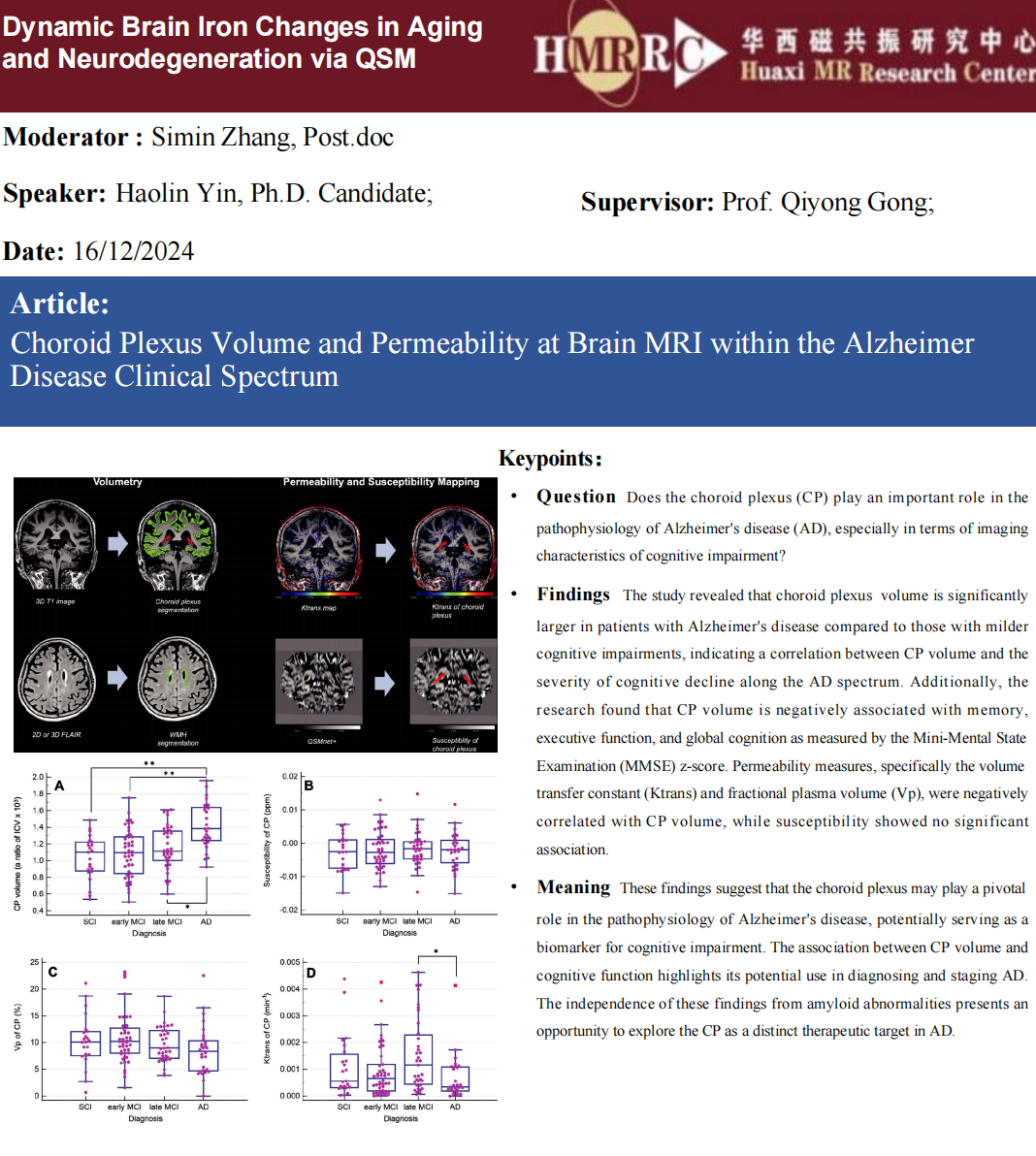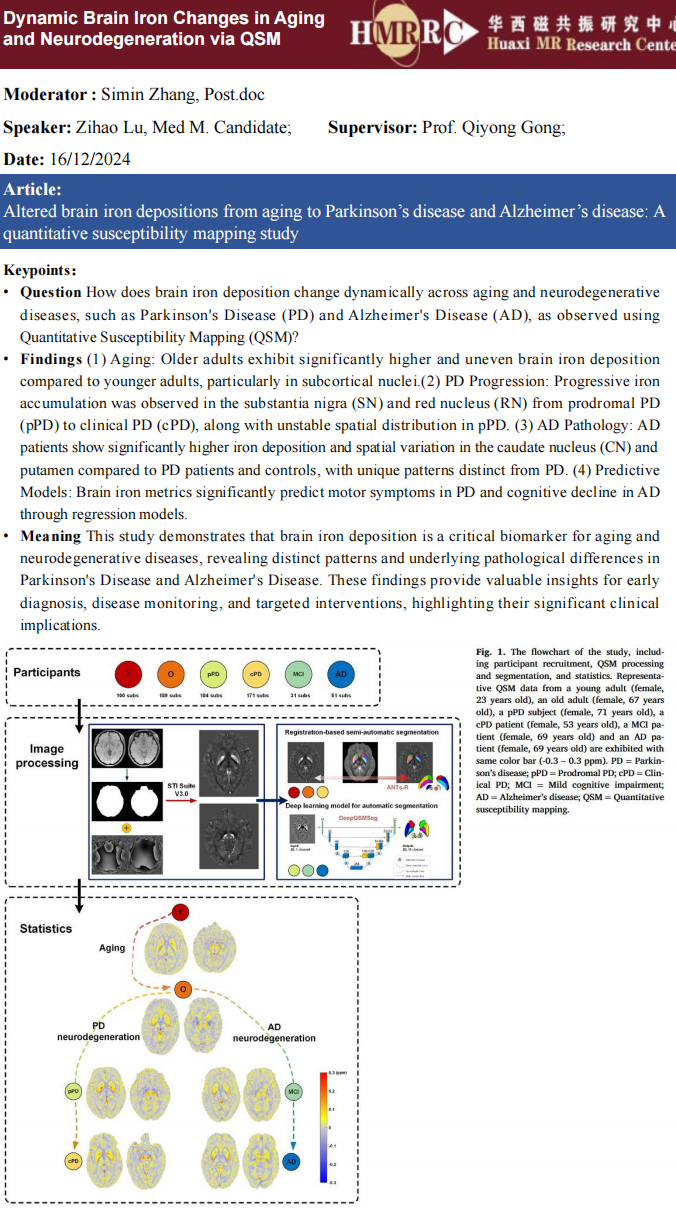
Dynamic Brain Iron Changes in Aging?and Neurodegeneration via QSM.
Topic: Dynamic Brain Iron Changes in Aging and Neurodegeneration via QSM
Moderator: Simin Zhang, Post.doc
Date: 16/12/2024, 14:00
Location: The lab of HMRRC (10011, the 8th Teaching Building)
Speaker 1: Haolin Yin, Ph.D. Candidate
Title: Choroid Plexus Volume and Permeability at Brain MRI within the Alzheimer Disease Clinical Spectrum

Keypoints:
Speaker 2: Zihao Lu, M.M. Candidate
Title: Altered brain iron depositions from aging to Parkinson’s disease and Alzheimer’s disease: A quantitative susceptibility mapping study

Keypoints:
Question: How does brain iron deposition change dynamically across aging and neurodegenerative diseases, such as Parkinson's Disease (PD) and Alzheimer's Disease (AD), as observed using Quantitative Susceptibility Mapping (QSM)?
Findings: (1) Aging: Older adults exhibit significantly higher and uneven brain iron deposition compared to younger adults, particularly in subcortical nuclei. (2) PD Progression: Progressive iron accumulation was observed in the substantia nigra (SN) and red nucleus (RN) from prodromal PD (pPD) to clinical PD (cPD), along with unstable spatial distribution in pPD. (3) AD Pathology: AD patients show significantly higher iron deposition and spatial variation in the caudate nucleus (CN) and putamen compared to PD patients and controls, with unique patterns distinct from PD. (4) Predictive Models: Brain iron metrics significantly predict motor symptoms in PD and cognitive decline in AD through regression models.
Meaning: This study demonstrates that brain iron deposition is a critical biomarker for aging and neurodegenerative diseases, revealing distinct patterns and underlying pathological differences in Parkinson's Disease and Alzheimer's Disease. These findings provide valuable insights for early diagnosis, disease monitoring, and targeted interventions, highlighting their significant clinical implications.